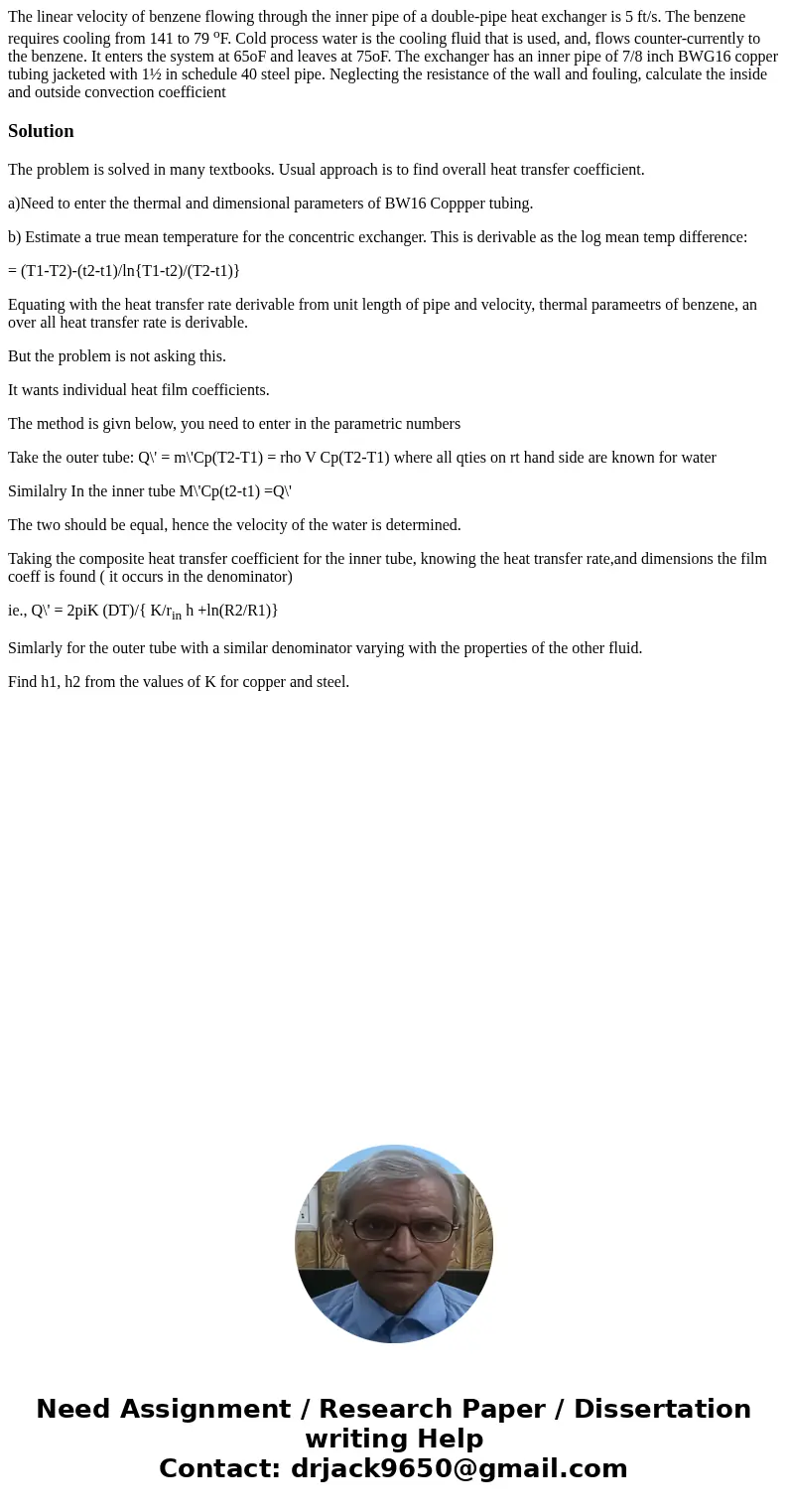The linear velocity of benzene flowing through the inner pip
The linear velocity of benzene flowing through the inner pipe of a double-pipe heat exchanger is 5 ft/s. The benzene requires cooling from 141 to 79 oF. Cold process water is the cooling fluid that is used, and, flows counter-currently to the benzene. It enters the system at 65oF and leaves at 75oF. The exchanger has an inner pipe of 7/8 inch BWG16 copper tubing jacketed with 1½ in schedule 40 steel pipe. Neglecting the resistance of the wall and fouling, calculate the inside and outside convection coefficient
Solution
The problem is solved in many textbooks. Usual approach is to find overall heat transfer coefficient.
a)Need to enter the thermal and dimensional parameters of BW16 Coppper tubing.
b) Estimate a true mean temperature for the concentric exchanger. This is derivable as the log mean temp difference:
= (T1-T2)-(t2-t1)/ln{T1-t2)/(T2-t1)}
Equating with the heat transfer rate derivable from unit length of pipe and velocity, thermal parameetrs of benzene, an over all heat transfer rate is derivable.
But the problem is not asking this.
It wants individual heat film coefficients.
The method is givn below, you need to enter in the parametric numbers
Take the outer tube: Q\' = m\'Cp(T2-T1) = rho V Cp(T2-T1) where all qties on rt hand side are known for water
Similalry In the inner tube M\'Cp(t2-t1) =Q\'
The two should be equal, hence the velocity of the water is determined.
Taking the composite heat transfer coefficient for the inner tube, knowing the heat transfer rate,and dimensions the film coeff is found ( it occurs in the denominator)
ie., Q\' = 2piK (DT)/{ K/rin h +ln(R2/R1)}
Simlarly for the outer tube with a similar denominator varying with the properties of the other fluid.
Find h1, h2 from the values of K for copper and steel.

 Homework Sourse
Homework Sourse